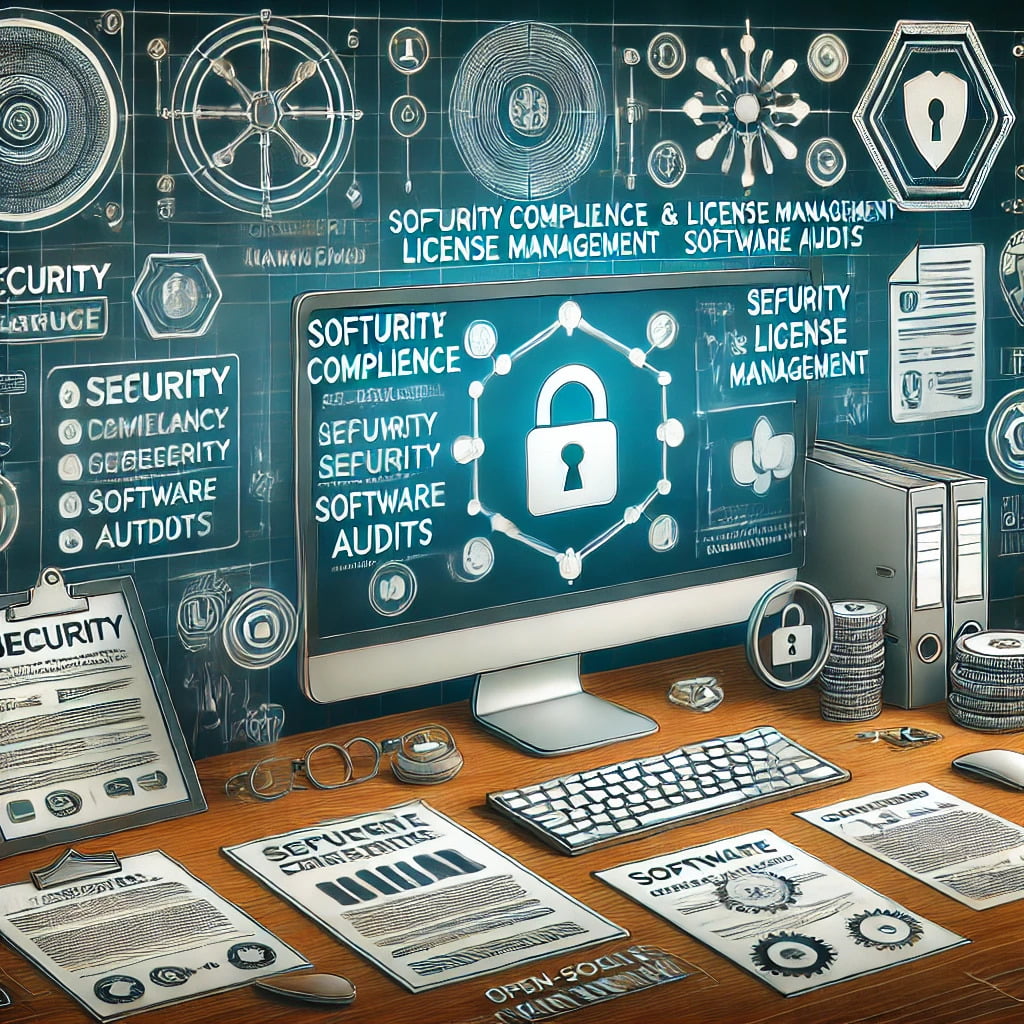Table of Contents
1. Introduction
In today’s technology-driven world, the role of software licensing in cybersecurity is increasingly vital. Software licenses not only dictate how software can be utilized but also play a crucial role in protecting an organization’s digital assets against cyber threats.
2. Understanding Software Licenses
2.1 Decoding Software Licenses
A software license is a legal framework that stipulates the usage, distribution, and modifications allowed for software. This includes security conditions that can vary from very restrictive proprietary licenses to more open and permissive open-source licenses.
2.2 Security Features Within Software Licenses
Software licenses directly influence the security features that are included or permitted in the software. For instance, proprietary software generally includes regular security updates and technical support, while open-source software offers the flexibility for users to modify the code, potentially enhancing its security based on individual needs.
3. The Impact of Software Licenses on Cybersecurity Risk Management
3.1 Compliance and Vulnerability Management
Effective management of software licenses is essential for ensuring compliance with regulatory standards and for maintaining up-to-date security measures. Properly licensed and updated software helps safeguard against vulnerabilities that could be exploited by cybercriminals.
3.2 The Dangers of Non-Compliance
Ignoring the terms of software licenses can expose organizations to serious security risks. The use of unlicensed software often means missing out on critical updates, increasing the risk of cyber-attacks. Furthermore, there are legal risks and potential financial penalties involved, which can significantly impact organizational resources.
4. Best Practices for Software License Management
4.1 Conducting Regular Software Audits
Regular software audits are vital for ensuring that all software used by an organization is fully compliant with licensing agreements, up-to-date, and secure against emerging threats.
4.2 Implementing License Management Tools
Software license management tools are crucial for tracking and managing software assets effectively. These tools help ensure that all software is legally licensed and regularly updated with the latest security patches.
4.3 Educating Employees on the Importance of Software Licensing
Training employees on the importance of using licensed software and adhering to licensing agreements is crucial. Such training helps mitigate the risks associated with unauthorized software use, which can lead to security vulnerabilities.
5. Frequently Asked Questions
Q1: How does a software license impact cybersecurity?
A1: Software licenses control how software is used and maintained, including how often it can receive updates, which are essential for security.
Q2: What are the risks of using unlicensed software?
A2: Using unlicensed software increases the risk of security breaches, lacks support and updates, and can result in legal and financial penalties.
Q3: Can modifying open-source software improve its security?
A3: Yes, the flexibility to modify open-source software can allow organizations to tailor the software to their specific security needs, potentially improving its security profile.
Q4: What is the difference between proprietary and open-source licenses?
A4: Proprietary licenses restrict how software can be used and modified, typically including support and updates from the vendor. Open-source licenses allow more freedom in modification and distribution but require more responsibility for security from the user.
Q5: How can software audits enhance cybersecurity?
A5: Software audits help ensure that all software is compliant with licensing terms, identify unauthorized software, and facilitate timely updates to address security vulnerabilities.
Q6: Why is compliance with software licensing important?
A6: Compliance helps avoid legal issues, ensures access to vendor support and updates, and reduces the risk of security vulnerabilities that could be exploited by attackers.
Q7: What tools are available for managing software licenses?
A7: There are several software asset management tools that provide features like inventory tracking, compliance checking, and automatic renewal notifications to simplify license management.
Q8: How does non-compliance with software licenses pose a security risk?
A8: Non-compliance can lead to the use of unsupported software that does not receive security updates, increasing vulnerability to cyber-attacks.
Q9: Can software license management reduce operational costs?
A9: Yes, effective license management can avoid unnecessary expenditures on unused licenses and potential legal penalties for non-compliance.
Q10: How frequently should software licenses be reviewed and audited?
A10: Best practices suggest at least an annual audit to ensure compliance and manage licenses effectively, but more frequent reviews may be necessary depending on the organization’s size and software usage.
6. Conclusion
Software licenses are integral to the cybersecurity infrastructure of any organization. By adhering to software licensing requirements, organizations can avoid legal issues, enhance their cybersecurity measures, and ensure their digital operations run smoothly and securely. Effective software license management is as essential as any cybersecurity practice in protecting against the diverse threats of the digital age.


